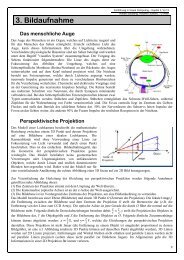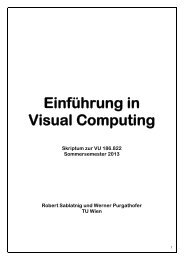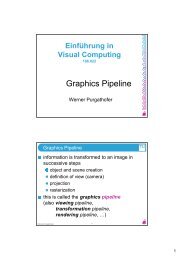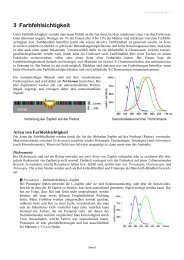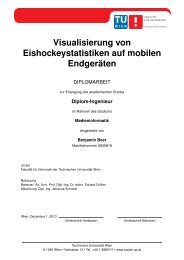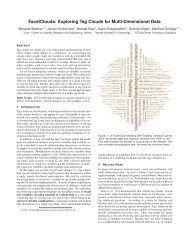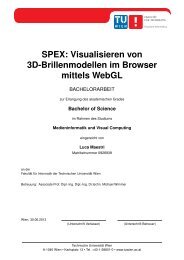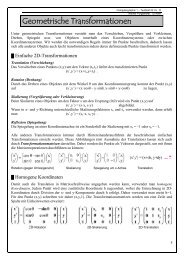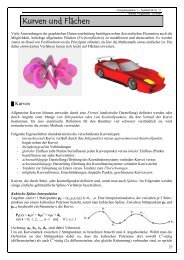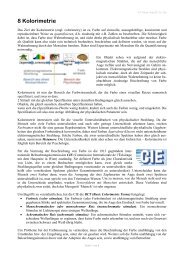Usability of Digital Cameras for Verifying Physically Based ...
Usability of Digital Cameras for Verifying Physically Based ...
Usability of Digital Cameras for Verifying Physically Based ...
Create successful ePaper yourself
Turn your PDF publications into a flip-book with our unique Google optimized e-Paper software.
two test cases, but instead <strong>of</strong> the opening there is a diffuse area light source at the<br />
center <strong>of</strong> the ceiling. Again, the error was very low (below 1.3%) and it could be<br />
proved that the s<strong>of</strong>tware used was able to calculate this effect correctly.<br />
The fifth test case dealt with the reflectance <strong>of</strong> the room surfaces. The surfaces<br />
<strong>of</strong> a square room are defined as uni<strong>for</strong>m diffusers. A point light source at the<br />
center <strong>of</strong> the ceiling is used <strong>for</strong> illumination. The errors were within a negligible<br />
margin except <strong>for</strong> the 0 and 0.9 to 1 reflectance values. The authors assumed that<br />
these errors came from an epsilon value being affected at these extreme values,<br />
but also point out that these values rarely exist in reality.<br />
The last test case was specified to verify the calculation <strong>of</strong> the daylight factor,<br />
which is commonly used to evaluate daylighting inside buildings. The geometry is<br />
the same as in the fourth test case. For the analytical solution, a module developed<br />
and validated by Dumortier and Van Roy [Sod06] at the LASH laboratory <strong>of</strong> the<br />
ENTPE–France was used. Un<strong>for</strong>tunately, in this case the s<strong>of</strong>tware yielded errors<br />
<strong>of</strong> over 13%.<br />
The work <strong>of</strong> Maamari and Fontoynont shows that defining a set <strong>of</strong> test cases<br />
where the solution can be derived analytically is a promising approach to validate<br />
global illumination rendering engines. Having a reliable benchmark would help<br />
to classify existing s<strong>of</strong>tware.<br />
2.4 Combined Approaches<br />
2.4.1 Comparison <strong>of</strong> several Rendering Systems<br />
In 1996, Khodulev and Kopylov [KK96] did a comparison <strong>of</strong> three physically<br />
based rendering systems: Lightscape Visualization System (LVS [Lig06], since at<br />
that time Lightscape had been taken over by Autodesk), Specter System [Int06]<br />
and Radiance [War94]. Amongst other criteria they investigated the physical ac-<br />
curacy <strong>of</strong> the global illumination simulation. They combined different approaches<br />
to verification – analytical tests (see section 2.3) and visual comparisons (see sec-<br />
tion 2.1) – to benefit from the advantages <strong>of</strong> each approach.<br />
Three different types <strong>of</strong> test scenes were used. Firstly, they defined a test case<br />
where the result could be calculated analytically. It consisted <strong>of</strong> a diffuse white<br />
cube with a point light source in its center. Six sample points on the inside <strong>of</strong> the<br />
cube were chosen <strong>for</strong> comparisons. In this way, the absolute simulation accuracy<br />
<strong>of</strong> each system could be estimated.<br />
29



